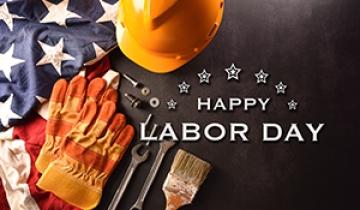They are pretty much household names--Amazon and Starbucks. Who among us hasn’t placed a last-minute Amazon order because we forgot a birthday, or discovered the sweet delight of a caramel macchiato sipped from a cup with the popular Starbucks logo? But who are they as employers?
We have seen Amazon grow from a bookseller to the second-largest private employer in the United States, where a consumer can get almost anything in almost no time at all. Their website advertises fulfillment jobs with a starting wage of up to $20 per hour, a sign-on bonus, a full menu of benefits including paid leave, tuition reimbursement, and others.
Amazon has fought unionization efforts for years using their seemingly unlimited resources to challenge union efforts, filing challenges where elections were held, and employing every option available to them to remain union-free. As such, it is somewhat surprising that the company recently had its first successful union campaign. This campaign, at a Staten Island, New York Amazon fulfillment facility, was not achieved by one of the traditional unions we might expect, but by a new organization titled the Amazon Labor Union formed through grassroots organizing initiated by a terminated Amazon supervisor. That employee’s history and knowledge of Amazon’s working conditions at the Staten Island location, combined with his persuasive narrative related to his treatment and termination, created a powerful story that connected with the rank and file.
Starbucks has become a mandatory stop for consumers in need of a caffeine fix--straightforward or fancy. The company has largely remained union-free and is known as a progressive, employee-oriented organization. A small contingent of Starbucks workers first unionized in March 1985. Their contract became effective in 1986, but decertification took place in 1992. Fast forward to 2022 and as of April 8th, workers at 200 stores have filed petitions, and 40 stores have unionized. Much like Amazon, many employees are working toward forming their own union called Starbucks Workers United.
What is the impetus behind these organizing efforts? The reasons are many and varied, but there are several common themes. The pandemic and these employers’ response to the needs of their employees have played a large role. Employees cited a lack of care and concern for their safety and protection, and a failure to reward them for continuing to work while the companies became highly profitable during the pandemic. There are, of course, other reasons, but these are the common threads between these groups.
Organizers are finding a great deal of support--from the White House, the NLRB, their peers, and the public (a September 2021 Gallup poll indicated 68 percent of Americans approve of labor unions). In the six-month period ending March 31, 2022, the NLRB saw a 57 percent increase in the number of petitions filed for union representation. Employees are finding more and more support for organizing labor efforts, which adds to the already full plates employers have with labor shortages, compensation battles, and supply chain issues. To stave off this particular challenge, employers can at least rely on tools already at their fingertips, such as a review of their employee relations practices, to ensure they are maintaining an environment that best meets the various needs identified by their employees.




